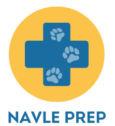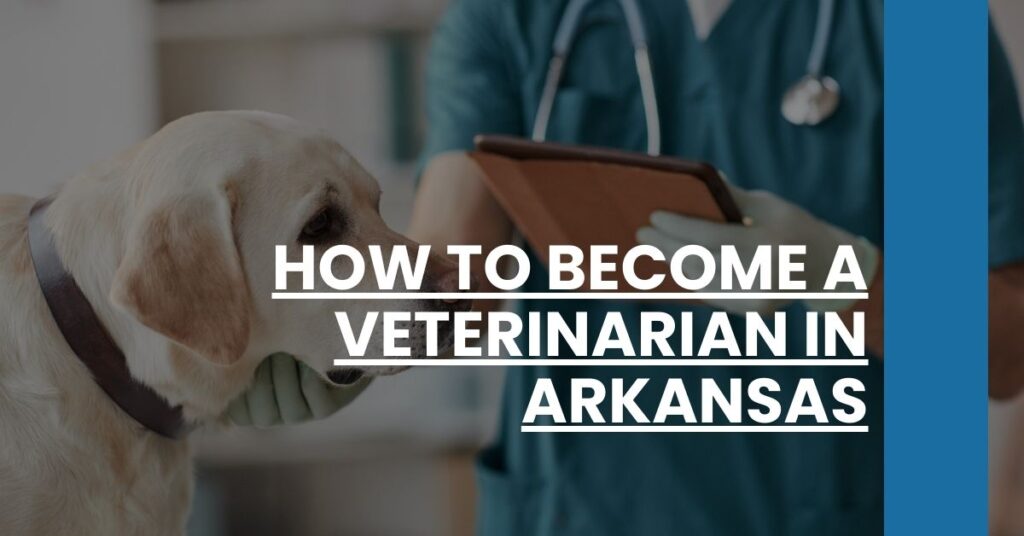Looking for schools in a specific city? Check out our lists of NAVLE in Little Rock, Fayetteville, Fort Smith, Springdale, and Jonesboro.
Embarking on the journey of how to become a veterinarian in Arkansas involves dedication and clear steps.
- Education: Understand the educational path from high school through veterinary school.
- Licensing: Navigate the critical exams and state-specific regulations.
- Experience: Gain the necessary hands-on experience through internships and volunteer work.
Follow this guide on how to become a veterinarian in Arkansas to fulfill your career aspirations.
- Understanding the Role of a Veterinarian
- Educational Pathway to Becoming a Veterinarian
- Certification and Finding Veterinary Schools
- Prerequisites and Admission Requirements for Veterinary School
- Accredited Veterinary Schools and Programs in Arkansas
- Gaining Practical Experience
- Navigating the Veterinary School Application Process
- Financial Considerations and Funding Your Veterinary Education
- Licensing Requirements and Exams
- Career Opportunities and Job Outlook for Veterinarians in Arkansas
- Continuing Education and Professional Development
- Looking for Veterinarian Information On States Bordering Arkansas?
- Conclusion
Understanding the Role of a Veterinarian
Veterinarians play a crucial role in animal healthcare, extending their expertise across various domains. They diagnose, treat, and prevent illnesses in animals while advocating for their well-being. Veterinarians work in diverse environments such as private clinics, animal hospitals, research laboratories, zoos, and farms.
What Does a Veterinarian Do?
- Diagnosis and Treatment: Veterinarians are adept at diagnosing conditions based on symptoms and medical tests, followed by prescribing the appropriate treatment.
- Surgical Procedures: They perform surgeries ranging from routine spaying and neutering to more complex procedures.
- Preventive Care: This includes vaccinations, dental care, and wellness check-ups to prevent health issues.
- Client Education: Veterinarians advise pet owners on nutrition, behavior, and overall health care practices.
Challenges in the Profession
Veterinarians often face emotional and physical challenges. Handling sick or injured animals can be stressful and physically demanding. Additionally, they must sometimes navigate difficult conversations with pet owners regarding prognosis and treatment options.
Skills and Qualities Needed
Successful veterinarians possess several critical skills:
- Strong Communication Abilities: Essential for interacting with pet owners and explaining treatment plans.
- Empathy and Compassion: Necessary for both animal care and owner interactions.
- Problem-Solving Skills: Required to diagnose and treat complex medical issues.
- Manual Dexterity: Important for performing surgeries and other intricate procedures.
Educational Pathway to Becoming a Veterinarian
The journey begins with a solid high school education that emphasizes science courses such as biology, chemistry, and physics.
Undergraduate Education
Prospective veterinarians typically pursue a bachelor’s degree in fields like animal science, biology, or related areas. Courses in anatomy, physiology, biochemistry, and microbiology are crucial.
Veterinary School Requirements
Next, students must enroll in a Doctor of Veterinary Medicine (DVM) program, which usually lasts four years. The curriculum combines theoretical knowledge and practical training. During clinical rotations, students gain hands-on experience by working under the supervision of licensed veterinarians.
Preparing for Veterinary School
High GPA and Test Scores: Aim for a GPA of at least 3.0 and competitive GRE scores.
Hands-On Experience: Internships, volunteer work, or part-time jobs in veterinary settings are essential.
Strong Recommendations: Obtain letters of recommendation from professionals in the field.
Personal Statement: Write a compelling essay that highlights your passion for veterinary medicine and your career goals.
Certification and Finding Veterinary Schools
North American Veterinary Licensing Examination (NAVLE)
Graduates must pass the North American Veterinary Licensing Examination (NAVLE) to practice in the United States. This exam evaluates clinical knowledge and skills necessary for entry-level veterinary practice.
Specialized Certifications
Veterinarians can pursue additional certifications in specialized areas, such as surgery, dermatology, or internal medicine, to enhance their skills and career opportunities.
Finding the Right Veterinary School
Choosing the right veterinary school is critical. You can use resources like the “Veterinary Schools Near Me” guide to find accredited institutions near Arkansas.
Financial Considerations and Scholarships
Veterinary education is a significant investment. Explore options such as federal and state scholarships, institutional aid, and other funding opportunities to manage the cost.
Prerequisites and Admission Requirements for Veterinary School
Admissions to veterinary schools are competitive. Here’s what you need to know:
Prerequisite Courses
Ensure you complete required courses such as anatomy, physiology, microbiology, and organic chemistry during your undergraduate studies.
Veterinary or Animal-Related Experience
Gain substantial hands-on experience through internships, volunteer work, or employment in veterinary clinics, animal shelters, or farms. This practical experience is crucial for your application.
Letters of Recommendation and Personal Statement
Strong letters of recommendation and a compelling personal statement are essential components of your application. Highlight your commitment to animal welfare and your motivations for pursuing a career in veterinary medicine.
Accredited Veterinary Schools and Programs in Arkansas
Regional Options
Currently, there are no accredited veterinary schools in Arkansas. However, nearby options include:
- University of Missouri College of Veterinary Medicine
- Oklahoma State University College of Veterinary Medicine
Comprehensive DVM Programs
These programs offer robust educational experiences, combining theoretical knowledge with practical training.
Specializations and Internships
Both universities provide opportunities for internships and specialization in various fields to tailor your veterinary education to your interests and career goals.
Gaining Practical Experience
Practical, hands-on experience is vital for your development as a veterinarian.
Internships and Externships
Seek internships and externships in various settings:
- Veterinary clinics
- Animal shelters
- Research facilities
- Farms
Volunteer Opportunities
Volunteer at animal shelters, wildlife rehabilitation centers, or zoos to gain diverse experiences.
Part-Time Jobs
Working part-time in veterinary settings provides valuable exposure to everyday practices and procedures.
Networking
Developing professional connections can open doors to future job opportunities and mentorship.
Navigating the Veterinary School Application Process
Research Veterinary Programs
You must begin by researching veterinary programs that align with your career goals and interests. Knowing the differences between programs is crucial. Review details such as:
- Program Curriculum: Evaluate core courses and elective options.
- Reputation and Accreditation: Ensure the school is accredited by the American Veterinary Medical Association (AVMA).
- Location and Facilities: Consider the campus environment and available resources.
Preparing Your Application
Effective preparation can set your application apart. Your application should include:
- Academic Transcripts: Submit official transcripts that reflect a strong academic performance.
- Letters of Recommendation: Obtain letters from professionals who can speak to your experience and commitment to veterinary medicine.
- Personal Statement: Write a compelling essay detailing your passion for veterinary science and your long-term objectives.
- GRE Scores: If required, include your Graduate Record Examination scores.
- Experience Documentation: Highlight experiences gained from internships, volunteer work, or jobs in veterinary settings.
Utilizing the Veterinary Medical College Application Service (VMCAS)
The Veterinary Medical College Application Service (VMCAS) streamlines the application process for multiple veterinary schools. Ensure you:
- Complete All Sections: Accurately fill out each part of the application.
- Adhere to Deadlines: Submit all materials by the specified deadlines.
- Proofread Thoroughly: Review your application for any errors before submission.
Financial Considerations and Funding Your Veterinary Education
Understanding Costs
Veterinary education is a significant financial investment. Tuition and related expenses can range widely based on the institution and residency status.
- Average Annual Tuition: Costs range between $20,000 and $60,000.
- Additional Expenses: Include costs for books, equipment, and living expenses.
Exploring Financial Aid Options
To manage these costs effectively, you should explore various financial aid options, such as:
- Scholarships: Many institutions and organizations offer scholarships based on merit or financial need.
- Grants: Federal and state grants provide additional funding options.
- Loans: Federal student loans offer lower interest rates and flexible repayment plans.
- Work-Study Programs: These programs enable students to earn money while gaining relevant work experience.
Institutional Aid and External Scholarships
Some veterinary schools offer institutional aid, including scholarships and grants. Additionally, organizations such as the American Veterinary Medical Foundation (AVMF) provide scholarships specifically for veterinary students.
Licensing Requirements and Exams
Passing the North American Veterinary Licensing Examination (NAVLE)
After earning your DVM degree, you must pass the NAVLE to practice in Arkansas. The NAVLE assesses your readiness and capability to practice as a veterinarian.
Arkansas State Veterinary Board Examination
In addition to the NAVLE, Arkansas requires candidates to pass the state-specific veterinary board examination, which focuses on regulations and laws unique to Arkansas.
Maintaining Your License
Once licensed, veterinarians in Arkansas must adhere to continuous education requirements to maintain their license. This ensures your knowledge stays current with advancements in veterinary medicine.
Career Opportunities and Job Outlook for Veterinarians in Arkansas
Exploring Career Paths
Veterinarians in Arkansas have a variety of career paths available:
- Private Practice: Specialize in small or large animal care.
- Public Health: Work in roles ensuring food safety and controlling zoonotic diseases.
- Academic Positions: Engage in teaching or research roles.
- Pharmaceutical and Biotechnology: Contribute to developing medical advancements.
Job Market and Employment Growth
The demand for veterinarians in Arkansas is growing. Employment opportunities are projected to increase by 16% from 2022 to 2032, indicating strong job stability and growth.
Areas of Special Growth
Specializations in companion animal practices and food animal production are particularly in demand. This reflects broader trends within the veterinary industry, offering promising career prospects.
Continuing Education and Professional Development
Importance of Continuing Education
Continuing education is essential for maintaining licensure and staying informed about the latest veterinary practices and technologies. Arkansas requires veterinarians to complete 20 hours of continuing education annually.
Opportunities for Professional Development
There are numerous avenues for professional development:
- Workshops and Seminars: Attend events to learn about new treatment techniques and technologies.
- Conferences: Network with peers and gain insights into emerging trends.
- Online Courses: Flexible options to further your education from anywhere.
Professional Organizations and Resources
Joining organizations like the Arkansas Veterinary Medical Association (AVMA) provides access to resources and networking opportunities. These organizations support your career growth and offer platforms to discuss best practices and innovations.
Looking for Veterinarian Information On States Bordering Arkansas?
In addition to Arkansas, we suggest looking for schools in nearby states.
- How to Become A Veterinarian in Missouri
- How to Become A Veterinarian in Tennessee
- How to Become A Veterinarian in Mississippi
- How to Become A Veterinarian in Louisiana
- How to Become A Veterinarian in Texas
Conclusion
Becoming a veterinarian in Arkansas is a rewarding endeavor that requires dedication and passion. Follow the steps outlined in this guide to navigate your path, from education to certification and beyond. Embrace continuous learning and professional development to ensure you deliver top-tier animal care and contribute to the field’s advancement.

